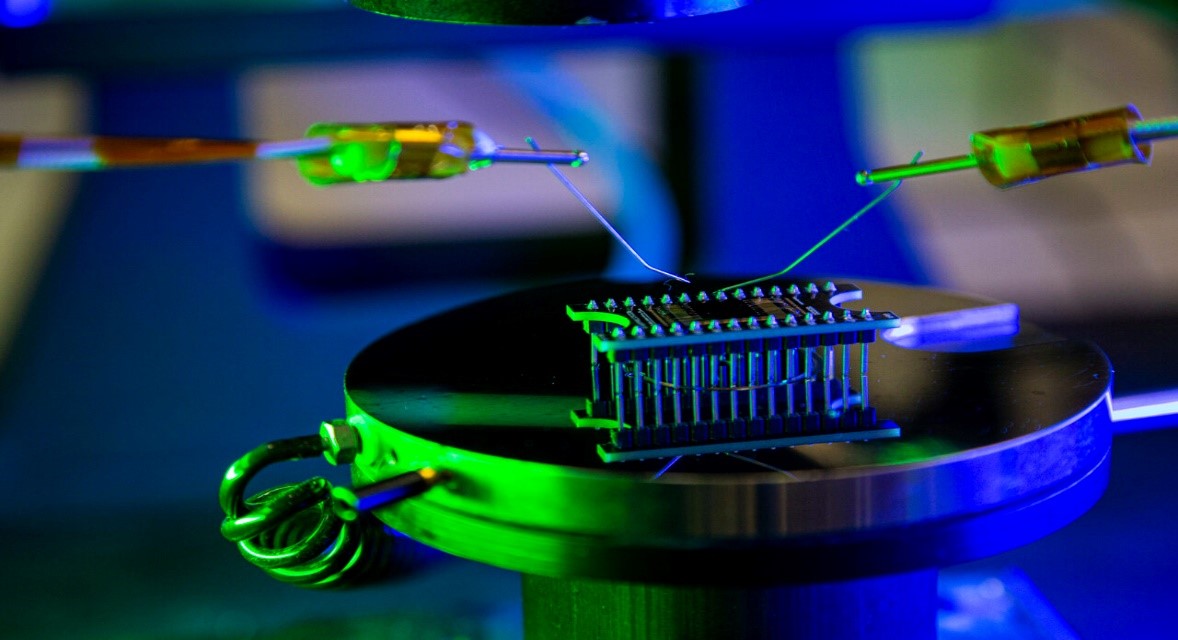Tiny, ultra-fast breakthrough device mimicking human vision could be used for next gen bionic eye
A team led by researchers from Melbourne’s RMIT University has produced a tiny breakthrough device that “sees” and creates memories in a similar way to human vision. The research is published in the journal Advanced Functional Materials.
The device is a potential step toward applications such as self-driving cars and bionic eyes. It is only three nanometres thick – thousands of times thinner than a human hair – and requires no external parts to operate.

Figure 1. Tiny, ultra-fast breakthrough device mimicking human vision could be used for next gen bionic eye
Tiny, ultra-fast breakthrough device mimicking human vision could be used for next gen bionic eye is shown in Figure 1. Yet it can capture, process and store visual information, just like the optical system of a human’s eyes and brain. And it does all of this with a tiny amount of data, making it a prime candidate for applications that require ultra-fast decision making.
“Performing all of these functions on one small device had proven to be a big challenge until now,” says team leader Professor Sumeet Walia, from RMIT’s School of Engineering. “We’ve made real-time decision making a possibility with our invention, because it doesn’t need to process large amounts of irrelevant data and it’s not being slowed down by data transfer to separate processors.”
The new device can retain information for longer periods than previous devices and is more energy efficient – it doesn’t need frequent electrical signals to refresh its memory.
RMIT PhD researcher Aishani Mazumder says the development team used the analogue processing of the human brain, which can process information quickly and efficiently using minimal energy, as a blueprint.[1]
Devices that attempt to mimic brain function are called “neuromorphic”.
Human eyes have a single retina that captures an entire image, which is then processed by the brain to identify objects, colours and other features.
“The human eye is exceptionally adept at responding to changes in the surrounding environment in a faster and much more efficient way than cameras and computers currently can,” Walia says.
The team mimicked the retina by using single-element image sensors that can capture, store and process visual information.
The neuromorphic invention is a single chip enabled by a sensing element, doped indium oxide, that's thousands of times thinner than a human hair and requires no external parts to operate.
RMIT University engineers in Australia led the work, with contributions from researchers at Deakin University and the University of Melbourne.
The team's research demonstrates a working device that captures, processes and stores visual information. With precise engineering of the doped indium oxide, the device mimics a human eye's ability to capture light, pre-packages and transmits information like an optical nerve, and stores and classifies it in a memory system like the way our brains can.
Collectively, these functions could enable ultra-fast decision making, the team says.
Team leader Professor Sumeet Walia said the new device can perform all necessary functions -- sensing, creating and processing information, and retaining memories -- rather than relying on external energy-intensive computation, which prevents real-time decision making.
"Performing all of these functions on one small device had proven to be a big challenge until now," said Walia from RMIT's School of Engineering.
"We've made real-time decision making a possibility with our invention, because it doesn't need to process large amounts of irrelevant data and it's not being slowed down by data transfer to separate processors."[2]
Reference:
- https://cosmosmagazine.com/technology/materials/mimic-human-vision-neuromorphic-chip/
- https://www.sciencedaily.com/releases/2023/06/230614220647.htm
Cite this article:
Gokula Nandhini K (2023), Tiny, ultra-fast breakthrough device mimicking human vision could be used for next gen bionic eye, AnaTechmaz pp.566

